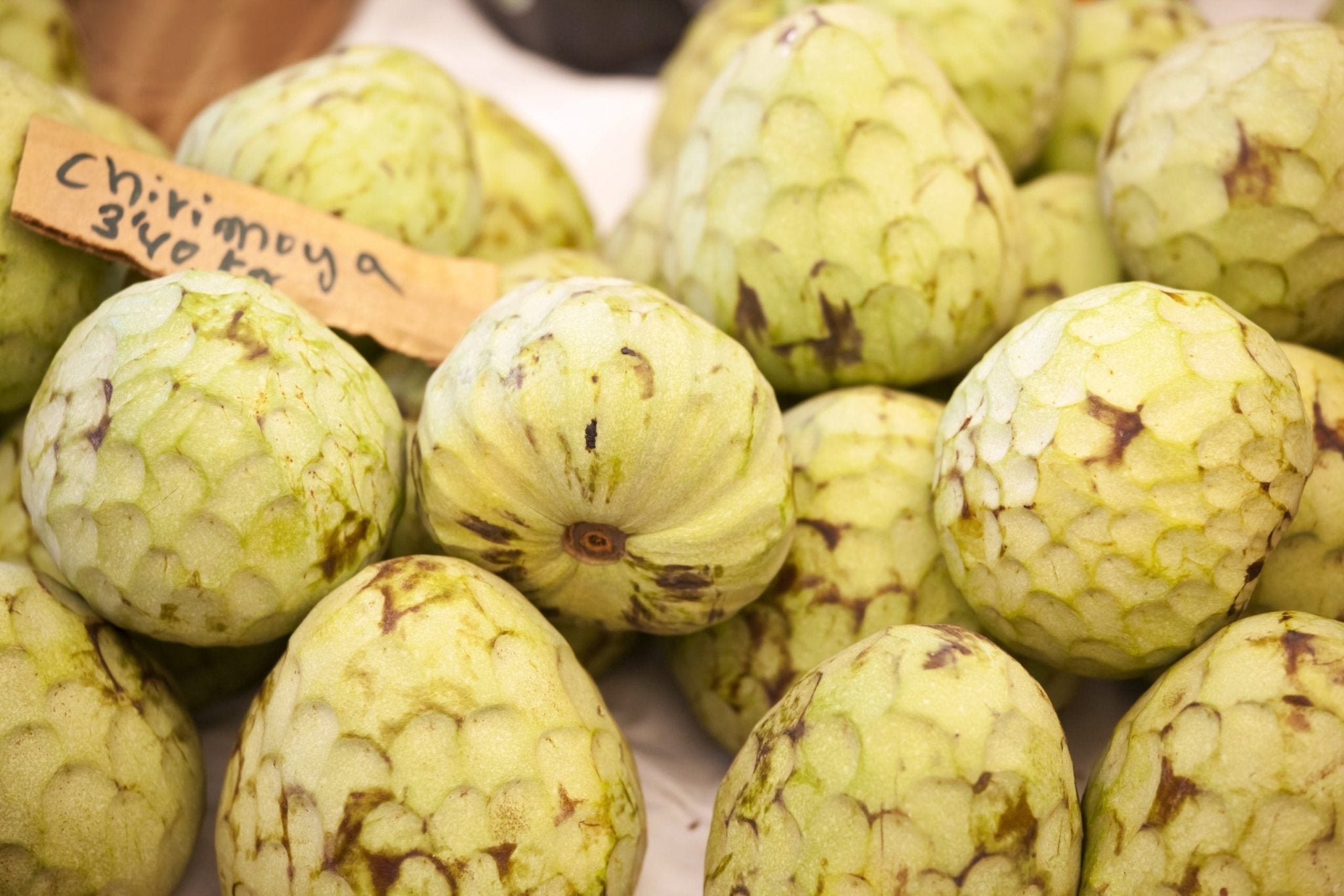
5 Mexican Fruits You've Probably Never Heard Of!
Mexico is one of the best places to find the most deliciously sweet fruits in season. You may think you’ve tried them all, but there are many exotic fruits available in Mexico that you’ve probably never heard of. Try finding them at your local Mexican grocery or farmer’s market. You’ll be amazed at the different flavors and textures of Mexican fruits!
 Is a tropical fruit native to Mexico and Central America. The most common varieties are black, yellow, white, and chicozapote. The shape and flesh will vary according to the variety, but the taste is sweet and the flesh is soft.
Is a tropical fruit native to Mexico and Central America. The most common varieties are black, yellow, white, and chicozapote. The shape and flesh will vary according to the variety, but the taste is sweet and the flesh is soft.
 Is a variety of zapote native to Cuba, Costa Rica and Mexico, but can be found across Latin America. It is oval in shape with a rough brown skin, but the flesh is soft and bright orange. Some people compare the taste to pumpkin pie. It is a combination of the flavor of pumpkin and apricot with notes of vanilla and nutmeg.
Is a variety of zapote native to Cuba, Costa Rica and Mexico, but can be found across Latin America. It is oval in shape with a rough brown skin, but the flesh is soft and bright orange. Some people compare the taste to pumpkin pie. It is a combination of the flavor of pumpkin and apricot with notes of vanilla and nutmeg.
 Is a tropical fruit native to Colombia, Ecuador, and Peru, but it can also be found in Mexico. It is oval in shape, with green skin, and deep indentations, which make it look a little bit like a dragon egg. Its flesh is milky white, sweet, and velvety, with a flavor similar to pineapple, banana, and papaya combined.
Is a tropical fruit native to Colombia, Ecuador, and Peru, but it can also be found in Mexico. It is oval in shape, with green skin, and deep indentations, which make it look a little bit like a dragon egg. Its flesh is milky white, sweet, and velvety, with a flavor similar to pineapple, banana, and papaya combined.
 Is a tropical fruit native to South America, but can be found in Mexico’s southern region. It’s a round orange-yellow fruit with tomato like flesh, but green in color. It is highly prized for its juice which is sweet and a bit tart. It can be eaten raw or cooked, and it is often used to make pies, jellies, jams, drinks, ice cream, and can even be fermented to make wine.
Is a tropical fruit native to South America, but can be found in Mexico’s southern region. It’s a round orange-yellow fruit with tomato like flesh, but green in color. It is highly prized for its juice which is sweet and a bit tart. It can be eaten raw or cooked, and it is often used to make pies, jellies, jams, drinks, ice cream, and can even be fermented to make wine.
 A fruit native to Mexico and South America, but it can be found in France, Italy, Spain, Portugal, Egypt and parts of the Middle East. It is known for its thick spiny skin and soft, sweet, & watery interior. There are many varieties, but the most well-known are green, red, yellow, brown and pink. The flavor is a combination of pear, cucumber, watermelon, and pineapple.
A fruit native to Mexico and South America, but it can be found in France, Italy, Spain, Portugal, Egypt and parts of the Middle East. It is known for its thick spiny skin and soft, sweet, & watery interior. There are many varieties, but the most well-known are green, red, yellow, brown and pink. The flavor is a combination of pear, cucumber, watermelon, and pineapple.
Sapote (Zapote)
 Is a tropical fruit native to Mexico and Central America. The most common varieties are black, yellow, white, and chicozapote. The shape and flesh will vary according to the variety, but the taste is sweet and the flesh is soft.
Is a tropical fruit native to Mexico and Central America. The most common varieties are black, yellow, white, and chicozapote. The shape and flesh will vary according to the variety, but the taste is sweet and the flesh is soft.
How to Eat It
To eat it, cut the zapote in half, remove the seeds, and peel the skin or scoop out the flesh with a spoon. It can be eaten fresh or added to smoothies, ice cream, aguas frescas, cakes, breads, and marmalades like this banana zapote smoothie.Mamey
 Is a variety of zapote native to Cuba, Costa Rica and Mexico, but can be found across Latin America. It is oval in shape with a rough brown skin, but the flesh is soft and bright orange. Some people compare the taste to pumpkin pie. It is a combination of the flavor of pumpkin and apricot with notes of vanilla and nutmeg.
Is a variety of zapote native to Cuba, Costa Rica and Mexico, but can be found across Latin America. It is oval in shape with a rough brown skin, but the flesh is soft and bright orange. Some people compare the taste to pumpkin pie. It is a combination of the flavor of pumpkin and apricot with notes of vanilla and nutmeg.
How to Eat It
To eat it, cut the mamey in half, remove the seeds, and scoop out the flesh with a spoon. It can be eaten fresh, but it is great in ice creams and desserts. Like this mamey ice cream.Chirimoya (Cherimoya)
 Is a tropical fruit native to Colombia, Ecuador, and Peru, but it can also be found in Mexico. It is oval in shape, with green skin, and deep indentations, which make it look a little bit like a dragon egg. Its flesh is milky white, sweet, and velvety, with a flavor similar to pineapple, banana, and papaya combined.
Is a tropical fruit native to Colombia, Ecuador, and Peru, but it can also be found in Mexico. It is oval in shape, with green skin, and deep indentations, which make it look a little bit like a dragon egg. Its flesh is milky white, sweet, and velvety, with a flavor similar to pineapple, banana, and papaya combined.
How to Eat It
To eat it, cut it in half and remove the seeds. One of the best ways of eating a chirimoya is to chill it in the refrigerator, cut it, then eat the flesh with a spoon like a custard. It is also great in drinks, salads, and desserts like this chirimoya custard with pistachios.Naranjilla (Lulo)
 Is a tropical fruit native to South America, but can be found in Mexico’s southern region. It’s a round orange-yellow fruit with tomato like flesh, but green in color. It is highly prized for its juice which is sweet and a bit tart. It can be eaten raw or cooked, and it is often used to make pies, jellies, jams, drinks, ice cream, and can even be fermented to make wine.
Is a tropical fruit native to South America, but can be found in Mexico’s southern region. It’s a round orange-yellow fruit with tomato like flesh, but green in color. It is highly prized for its juice which is sweet and a bit tart. It can be eaten raw or cooked, and it is often used to make pies, jellies, jams, drinks, ice cream, and can even be fermented to make wine.
How to Eat It
To eat it, cut the fruit in half and squeeze out the flesh. The sweet naranjilla juice is perfect to quench the summer heat with this refreshing naranjilla drink or lulada.Tuna (Prickly Pear)
 A fruit native to Mexico and South America, but it can be found in France, Italy, Spain, Portugal, Egypt and parts of the Middle East. It is known for its thick spiny skin and soft, sweet, & watery interior. There are many varieties, but the most well-known are green, red, yellow, brown and pink. The flavor is a combination of pear, cucumber, watermelon, and pineapple.
A fruit native to Mexico and South America, but it can be found in France, Italy, Spain, Portugal, Egypt and parts of the Middle East. It is known for its thick spiny skin and soft, sweet, & watery interior. There are many varieties, but the most well-known are green, red, yellow, brown and pink. The flavor is a combination of pear, cucumber, watermelon, and pineapple.
How to Eat It
To prepare them, use a paring knife to cut off both ends of the fruit and make a 1/4 of an inch deep cut lengthwise. Place your finger in between the flesh and the outer skin and simply pull back, the outer layer should come off easily. It can be eaten fresh or it can be used to make jellies, syrups, candies, and drinks like this prickly pear agua fresca.Would you like to be the first to hear about our new products and more? Sign up for our Nature’s Path Newsletter.








